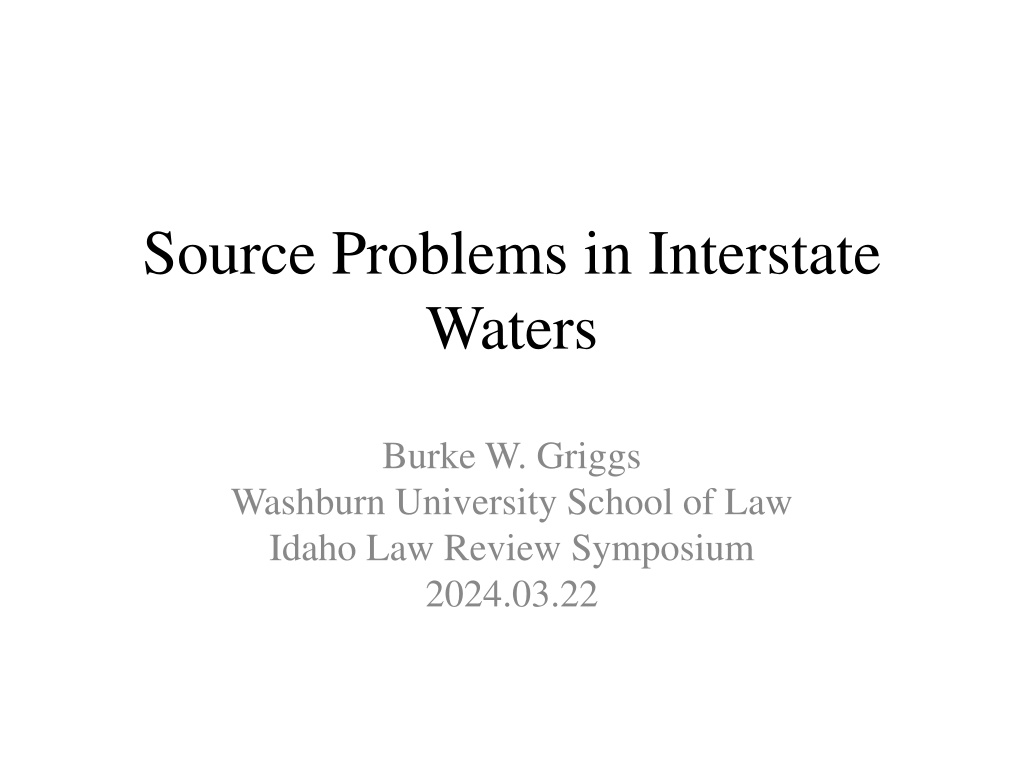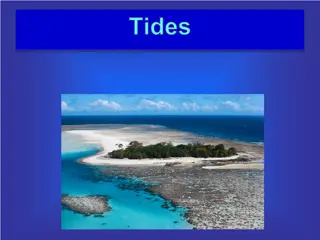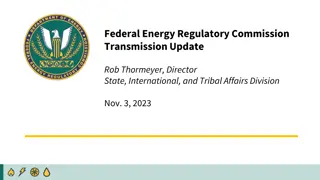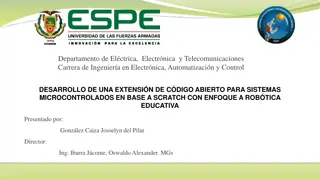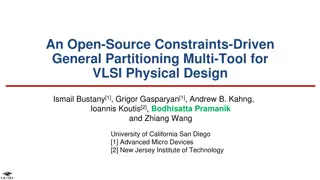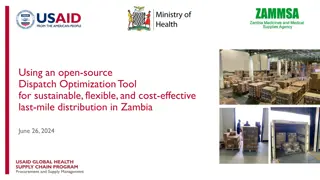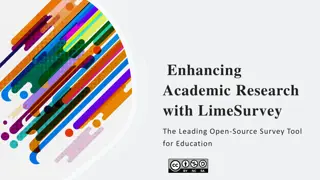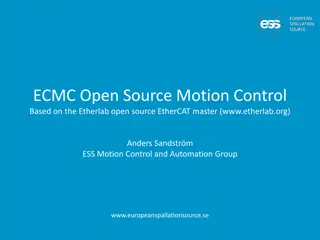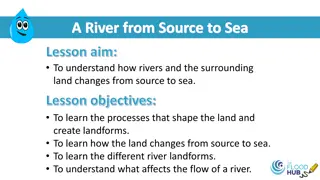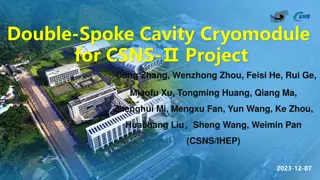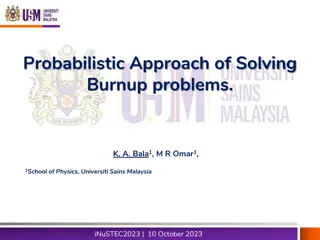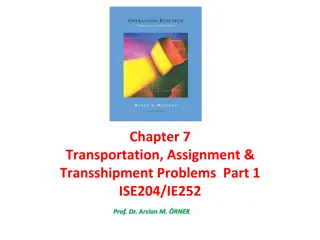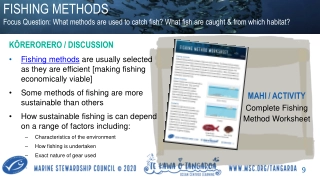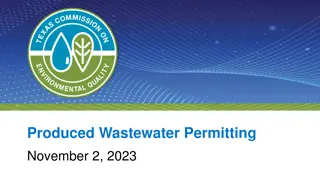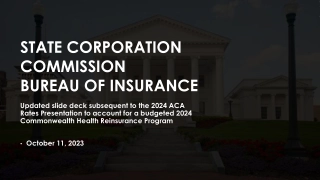Source Problems in Interstate Waters
Explore the intricate landscape of interstate water issues, from historical disputes like the Kansas v. Colorado case to modern conflicts such as Texas v. New Mexico. Delve into the intersecting realms of hydrology, law, and federal interests in managing water resources. Discover how the law navigates the complex web of interstate compacts, Reclamation projects, and groundwater disputes, raising critical questions about jurisdiction and governance.
Download Presentation
Please find below an Image/Link to download the presentation.
The content on the website is provided AS IS for your information and personal use only. It may not be sold, licensed, or shared on other websites without obtaining consent from the author. Download presentation by click this link. If you encounter any issues during the download, it is possible that the publisher has removed the file from their server.
Presentation Transcript
Source Problems in Interstate Waters Burke W. Griggs Washburn University School of Law Idaho Law Review Symposium 2024.03.22
Outline of Presentation 1. Hydrologic Source Problems Rivers, Reclamation, and Groundwater 2. Legal Source Problems Parens patriae, Court sources 3. Epistemic Source Problems Harmon I, Harmon II, Navajo Nation 4. Suggestions for addressing these problems. assistance welcome!
1. Hydrologic Source Problems Source 1: the interstate Arkansas River. Kansas v. Colorado (1902-07): Colorado s two rivers theory. Kansas s subterranean river theory. The Court flatly rejects both theories to the relief of hydrogeologists everywhere. 206 U.S. 46, 115 (1907). Query: why did the states make these arguments?
1. Hydrologic Source Problems Source 2: Federal Reclamation Project water. Reclamation Act of 1902 USA protects basins upstream of projects through embargoes of the Upper Rio Grande, North Platte, and Salt Rivers. 1902-1945: USA participates in interstate disputes to assert jurisdiction and control over unappropriated water in western basins for Reclamation projects. What is the source of the disputed waters water under state jurisdiction (compact/decreed water) or water stored (and contracted) in a federal project? What governs, Reclamation law or an interstate compact?
Texas v. New Mexico 2013: New Mexico sues, objecting to USBR contracts with EBID and EPWID. This motivates Texas to sue New Mexico, 2014, for violations of the Rio Grande Compact. USA allowed to intervene in 2018, as an agent of the Compact. Files counterclaims against NM. TX and NM reach settlement terms, and the Special Master approves, finding the settlement conforms with the Compact. USA takes exceptions to the Special Master s recommendation, arguing that its federal interests are not protected under the proposed consent decree (even though its claims have gone away (?)).
Texas v. New Mexico, cont. USA is clearly (and justifiably) concerned about groundwater over-pumping below EBR. That has harmed the Reclamation districts. USA: Reclamation law trumps the Compact. States: Compact trumps Reclamation law. The USA is vigorously protecting Reclamation projects and federal water interests in this interstate basin. Against intrastate groundwater pumping. The law of the Rio Grande Compact and Reclamation law are inextricably intertwined. Texas v. New Mexico (2018).
Justice Jackson at oral argument, 3/20/24: Why aren t these [laws about interstate, Reclamation, and intrastate waters] all connected?
Query. Why has the United States approached the interstate and groundwater-engaged conflict in Texas v. New Mexico so differently than it has in other recent interstate suits?
Kansas v. Nebraska II Republican River Compact (1943) to secure Reclamation investments in the basin. Reclamation Project (Bostwick Project) and reservoir (Harlan County Reservoir) serves two districts, one in NE, on in KS. Basin hammered by groundwater over-pumping, reducing flows into HCL. Kansas sues. USA stays away. Amicus. As a consequence, USBR projects in NE at risk NE state courts deny takings claims brought by senior irrigators dependent on projects.
Florida v. Georgia, No. 142 Orig. USACE controls the ACF Basin, especially the Chattahoochee. FL sues to protect Apalachicola Bay from upstream GA groundwater pumping. USA stays away, claims sovereign immunity. Special Master recommends dismissal, because USA is a necessary party and can t be joined because it has asserted sovereign immunity. Court remands, and case eventually dismissed for lack of proof (under the Court s clear and convincing standard). Query: how can the Court adjudicate an interstate dispute under its original jurisdiction without the most important party across the basin the USA?
Justice Breyer, Oral Argument, 1/4/2018: What are we supposed to do here?
Which USA are we dealing with? Emerson: A foolish consistency is the hobgoblin of little minds, adored by little statesmen and divines. With consistency a great soul has simply nothing to do. The USA is such a great soul. Sovereign immunity. But is that right? Given the commonality of the fact pattern, why not a common response? Or is the USA evolving? (Cue the Interstate Sovietologists.)
The Klamath Kluster Upper Basin and Klamath Lake (OR) Klamath Project (Bureau of Reclamation) (OR/CA) Lower Basin: Hoopa Valley and Yurok Tribes (CA) Other tribes across Basin Klamath River Basin Compact (1957)-- guess who was not invited? Irrigation and Hydro. The ESA.
The Hydrologic Source Problem Source 3: Groundwater. Which is connected to surface water. (See Kansas v. Colorado, 1907). Drives much of interstate compact litigation between the 1980s and the 2010s. A problem that recurs for several reasons: Compacts predate the groundwater revolution. Groundwater s dominance in most states drives litigation strategies. The Court has consistently and correctly resolved the issue, but on a basin-by-basin basis.
New Hydrological Source Problems Augmentation projects that move water within a basin or across a basin to enable compliance with a compact (CO, NE). Large inter-basin projects that are not related to interstate compact (yet?). Geogenic pollution of interstate waters (CO- KS). Is this material depletion?
2. Legal Source Problems A. The parens patriae problem. Missouri v. Illinois (1901): the state has standing to bring suit for all of its citizens. How does parens patriae adjust to the modern segregation of water users within a state-- groundwater irrigation communities vs. surface irrigation communities? Kansas v. Nebraska, No 126 Orig. (Republican); Texas v. New Mexico, No. 141 Orig. (Rio Grande).
2. Legal Source Problems (cont.) B. The Court s Legal Process Problems. S.Ct.R. 17: appointment of special master, who serves as the judge: record, report, and recommendations. Court only hears exceptions to the findings of the special master. E.g., two days ago, in Texas v. New Mexico, No. 141 Orig. Court owes the special master no deference. He/she is a mere amanuensis. (Scalia, J.)
What Source Problems? The authoritative texts concerning the litigation the Special Masters Reports are given no precedential value, even though they exercise real persuasive power in subsequent suits. e.g., Kansas v. Colorado, 4thReport of the Special Master (1995) (economic damages). Major and chronic issues within a case often escape the Court s scrutiny because the Court only scrutinizes exceptions. e.g., the federal role in interstate decrees The Court is reluctant to expand or declaim the federal common law of interstate waters. e.g., Mississippi v. Tennessee
3. The Epistemic Source Problem What do we know and believe about interstate and inter-sovereign waters, and how do we attain such knowledge and belief? This is not a flaky philosophical question. It is fundamental to the basic legal issues: Interstate decrees and esp. interstate compacts. Treaties and tribal agreements.
The Harmon Doctrine (pt. 1): Rivers Briefly stated: waters originating in one state are exclusively the property of that (usually upstream) state. (1890 s). Asserted by Colorado and flatly rejected in Kansas v. Colorado (1907). Reasserted by Colorado in Wyoming v. Colorado (1911-22) and in Nebraska v. Wyoming (1935-45). Legally incorrect; politically bulletproof.
The Harmon Doctrine (pt. 2): Groundwater (again) Groundwater is not part of interstate water supplies, whether compacted, decreed, or otherwise; so, see Harmon Doctrine pt. 1. Rejected in Kansas v. Nebraska I (2000), Montana v. Wyoming (2015), ad nauseam. Reasserted, in a most atavistic way, in Mississippi v. Tennessee, and again rejected. Query: why do the states makes these arguments? Legally incorrect, politically attractive.
Groundwater-Harmon: Why? A groundwater irrigator s belief, independent of and contrary to the law, that he owns the groundwater belief the land. Absolute moral rights Buzz Thompson (writing in the Idaho Law Review!) Groundwater irrigation communities, surface water irrigation communities, and the parens patriae problem. Interstate waters are under federal jurisdiction; groundwater is not.
The Epistemic Problems of Tribal Rights and Federal Duties [grossly simplified] Tribal reserved water rights are reserved by implication. Winters (1908). The tribe s rights are originally owned/held by the tribe, and not by the United States on its behalf. Winans (1905). The United States generally owes a trust duty to the Tribes, but the specific duties depend on treaties and other governing legal sources.
Arizona, et al., v. Navajo Nation, et al. (2022) Dec. Jgmt. action brought by NN requesting the USA to identify and account for water supplies to which the NN is entitled pursuant to its 1868 treaty with the USA. Dismissed per 12(b); reversed by 9th Circuit; SCOTUS grants cert. Court reverses and dismisses the case: Winters rights are not in question. But, the USA s trust duties here, treaty duties do not obligate the USA to take affirmative steps to deliver water to the NN lands.
Majority: J. Kavanaugh Epistemic sources of opinion: Assumes Winters (implied rights). The language of the 1868 Treaty. Trust duty/doctrine jurisprudence that informs how the courts must read these treaties to look for specifics. Reasoning based on sources: the USA owes no affirmative duty to provide water, because that duty is not clearly established in the Treaty. One paragraph. Not a complicated problem.
Dissent: J. Gorsuch. Epistemic bases of opinion: Assumes Winters. The history of the Navajo Nation, esp. from 1849- 1868. The 1868 Treaty and the record of its negotiations. The history of the Colorado River Compact, esp. the 1928 Boulder Canyon Project Act.
Gorsuch, J., cont. Reasoning based on sources: Treaty promise of a permanent home, and record of negotiations, water central to the agreement. Winters. The USA controls the waters and infrastructure of the lower Colorado River Basin. The USA s (1) fiduciary relationship to the Navajo, plus (2) the USA s complete control over Navajo property (per Winans) gives rise to the duty to account. Thus, the USA has a duty to account to the tribe regarding the rights the Tribe owns and where it owns them. No one else knows this, and know one else can.
The Episteme of the Historians brief Historical sources and historians work, as opposed to law office history. (See Rakove, Jack.) The prominence of tribes and inter-sovereign relations at the Constitutional Convention. Federal cases, e.g., Worcester v. Georgia. Tribes understand things differently. How did the Tribe understand the 1868 Treaty? Winters is proof of the trust doctrine: the USA brought suit on behalf of the tribes (which could not sue in their own right until 1966) Thus, the trust doctrine is constitutionalized.
The Episteme of the Dine Brief Historical and subjective: how did the Navajo understand the 1868 Treaty? The Treaty, and Navajo/Dine ways of knowing, imposed four related duties: 1. Thinking 2. Planning 3. Implementation 4. Reflection on the results for improvement. (adaptive management, Navajo-style!) Thus, the case should go forward.
The Episteme of the WWU Brief Consequentialist: dismiss based on the alleged/predictable consequences if the Navajo obtain wet water (per Kavanaugh) or an accounting of their rights and sources (Gorsuch): Reliance interests generally. The unsettling of settled state-law rights. Reduction of junior state-law rights (and almost all are junior). This is consequentialism, not pragmatism.
Question for the learned audience Winters did not get into the facts; it employed canons of construction to recognize implied rights. A gap filler. Thanks to the work of historians and other experts, we can reconstruct how tribes understood the treaties written by the USA. Should courts, where possible, replace canons/gap-fillers with historical evidence of the tribes conceptions?
Some concluding suggestions. 1. Hydrologic sources. Focus on hydrological integrity. Segregation doesn t work. View compacts and breaches to focus on material depletion and beneficial use practically, because these are concepts which change over time. Water law has always recognized this.
2. Legal Sources. A. Confront the issue of parens patriae in the new world of segregated irrigation communities. B. Elevate, where appropriate, the precedential value of Special Masters Reports. E.g., SM Thompson on lagged depletions in MT v. WY. C. The Court can issue more common law and not be so restrained and devoid of any useful analysis (Dan Tarlock, on MS v. TN). This will help all states, by providing more guidance. E.g., a presumption that groundwater tributary to a stream is compacted groundwater.
3. Epistemic Sources A. Historical and anthropological evidence about the meaning of compacts and treaties should be able to rebut implied rules and presumptions just as the work of hydrologists has replaced the silences and ambiguities of compacts. B. Knowledge of the resource and the effects of its overuse and misuse have changed, and our ability to measure those effects has dramatically improved. The better we can describe the dynamics of rights and allocations, the better we can administer interstate basins.
A Response to the Problems GABRIEL ECKSTEIN, BURKE GRIGGS, AND JERRY SHERK, THE WORK OF SPECIAL MASTERS IN INTERSTATE WATER LITIGATION Collects and digitizes, in searchable format, all special masters reports in interstate water litigation. Online 2025. Cite Special Masters Reports in amicus briefs!
Thank you for making this day necessary."
